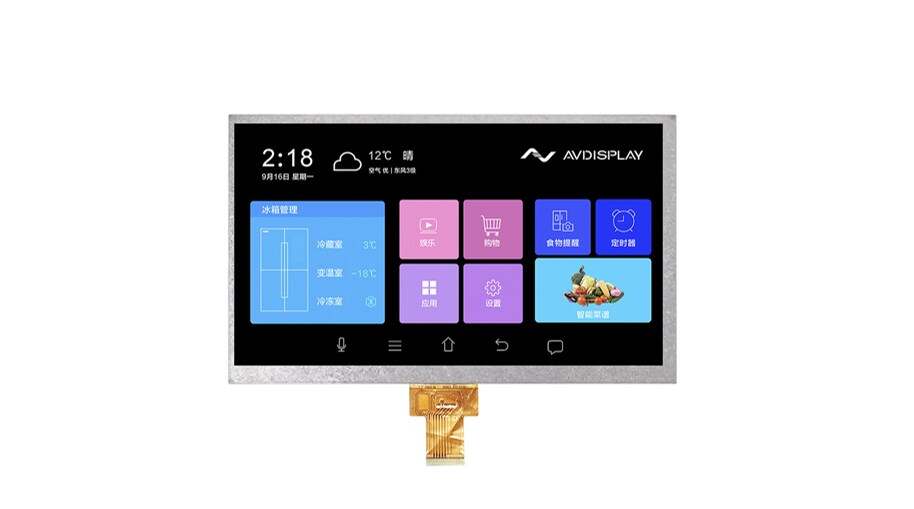Email format error
Email cannot be empty
Email already exists
6-20 characters(letters plus numbers only)
The password is inconsistent
Email format error
Email cannot be empty
Email does not exist
6-20 characters(letters plus numbers only)
The password is inconsistent


TFT LCD (Thin-Film Transistor Liquid Crystal Display) technology has transformed the landscape of visual displays, powering everything from smartphones to large-screen televisions. This blog will explore the history and evolution of TFT LCD technology, highlighting key milestones and innovations. We will also examine how companies like AVD have adapted to these changes, continuously providing cutting-edge display solutions.
TFT LCD technology utilizes a thin-film transistor to control individual pixels, offering enhanced image quality compared to traditional LCDs. The technology allows for faster refresh rates and improved color reproduction, making it a preferred choice for modern displays.
The journey of TFT LCD technology began in the 1960s with the development of liquid crystal displays. Early LCDs were limited in performance, primarily used for calculators and watches.
In 1988, the introduction of TFT technology marked a significant leap forward. Researchers developed the first TFT LCDs that offered better response times and image quality. This innovation laid the foundation for modern display technology, allowing for the production of larger screens suitable for computers and televisions.
By the 1990s, TFT LCD technology had gained popularity in various applications, including computer monitors and portable devices. Companies began to invest heavily in manufacturing processes, resulting in lower production costs and wider availability. This decade saw the launch of notable products like laptops featuring TFT displays, setting the stage for the mobile computing revolution.
As demand for high-quality visuals grew, manufacturers focused on enhancing resolution and color depth. The introduction of high-definition (HD) displays in the early 2000s was a game changer, offering sharper images and richer colors. Innovations such as Wide Color Gamut (WCG) technology further improved the visual experience by expanding the range of colors displayed.
The integration of touchscreen technology into TFT LCDs opened up new possibilities for user interaction. Smartphones and tablets began to dominate the market, with manufacturers leveraging TFT LCDs to create responsive and intuitive interfaces. This evolution was crucial in shaping how consumers interacted with digital devices.
AVD has been at the forefront of the TFT LCD revolution, continuously adapting to technological advancements. The company focuses on research and development, investing in the latest display technologies to meet evolving consumer needs.
As environmental concerns grow, AVD has taken steps to incorporate sustainable practices into its manufacturing processes. The company prioritizes energy-efficient technologies, reducing the environmental impact of its TFT LCD products.
The demand for higher resolution displays continues to rise, with 4K and 8K becoming increasingly common. Future advancements will likely focus on enhancing refresh rates, ensuring smoother visuals for gaming and video applications.
While TFT LCDs remain popular, technologies like OLED and Mini-LED are emerging as alternatives, offering superior contrast ratios and color accuracy. As these technologies evolve, TFT LCD manufacturers, including AVD, may adopt hybrid approaches to leverage the strengths of each.
Flexible display technology is making waves in the industry, allowing for innovative designs in smartphones and wearable devices. AVD is exploring flexible TFT LCD solutions to meet the growing demand for adaptable screens that can conform to various shapes.
The evolution of TFT LCD technology has been marked by significant milestones and innovations, transforming the way we experience visual content. From its humble beginnings in the 1960s to the advanced displays we use today, TFT LCD technology continues to evolve.
AVD’s commitment to innovation, customization, and sustainability positions the company as a leader in the display solutions market. As technology progresses, AVD will continue to adapt, ensuring that it provides cutting-edge TFT LCD solutions that meet the needs of a diverse and dynamic market.
In a world increasingly reliant on visual technology, staying informed about advancements in TFT LCDs is essential for businesses and consumers alike. By understanding the history and future of this technology, we can appreciate the innovation that shapes our everyday experiences.